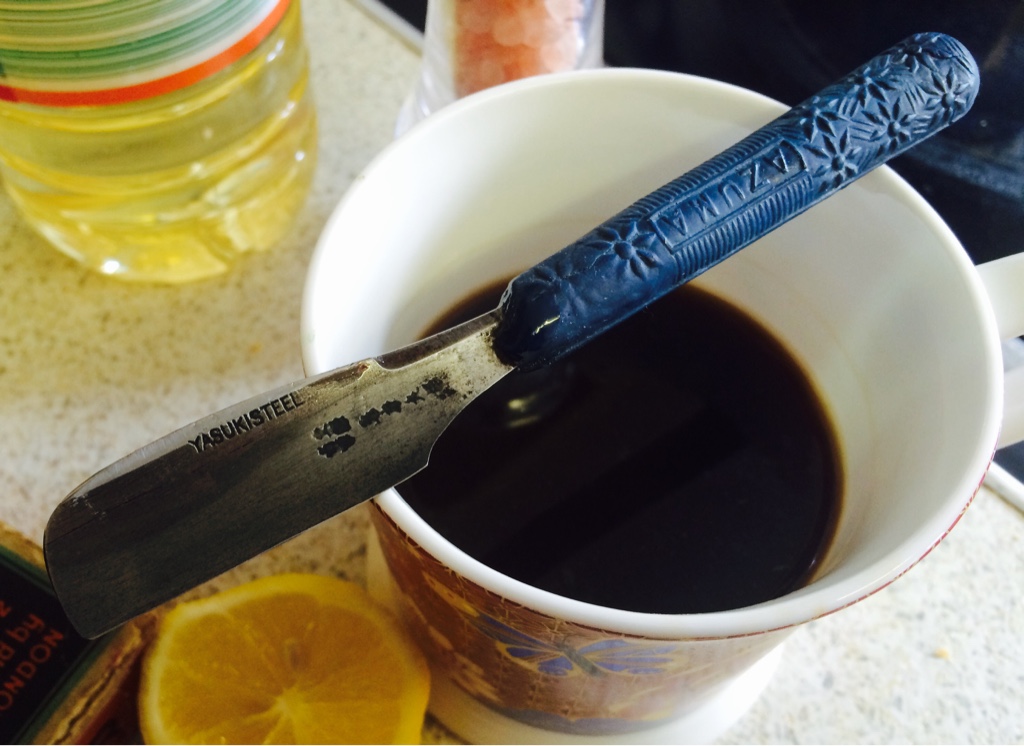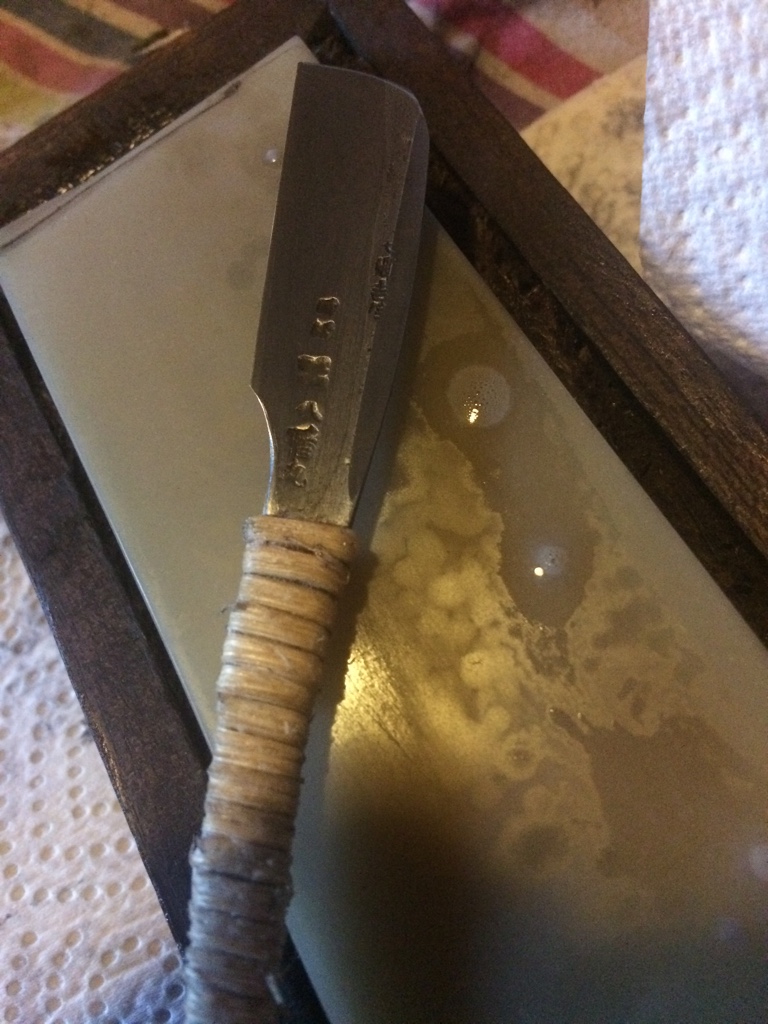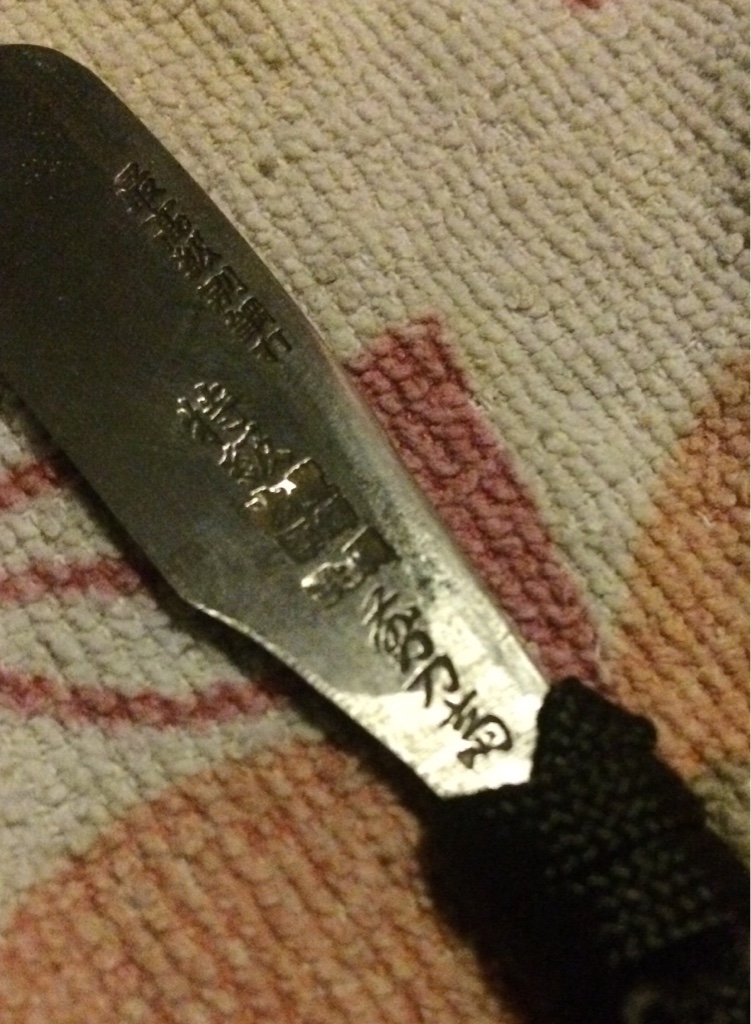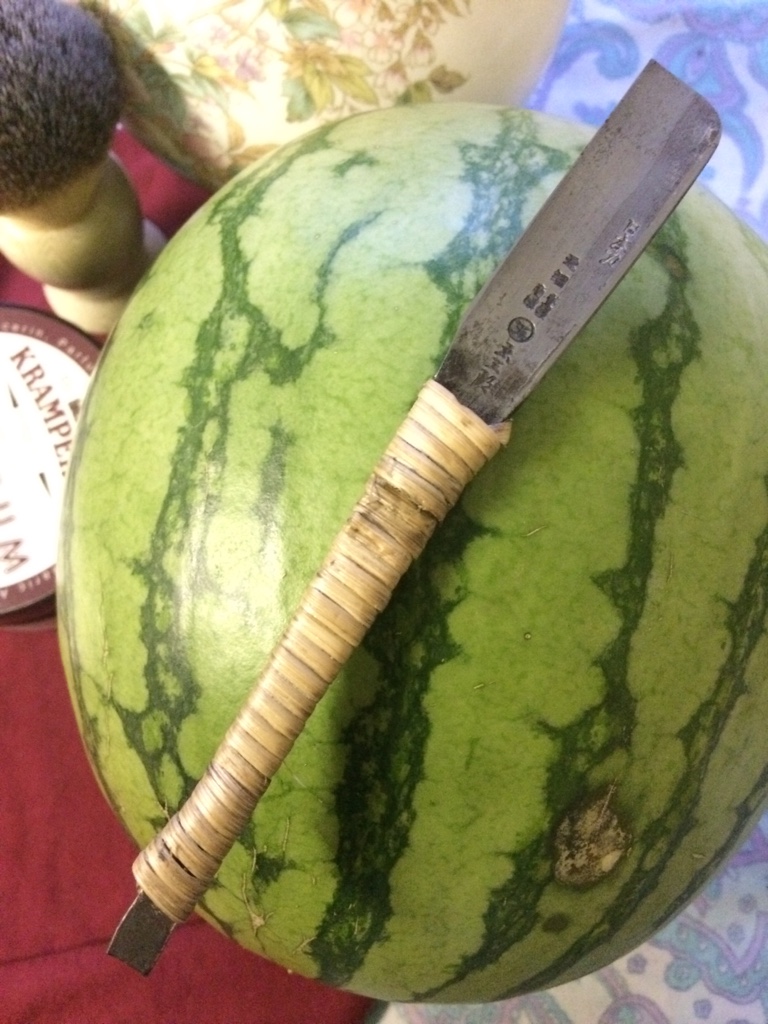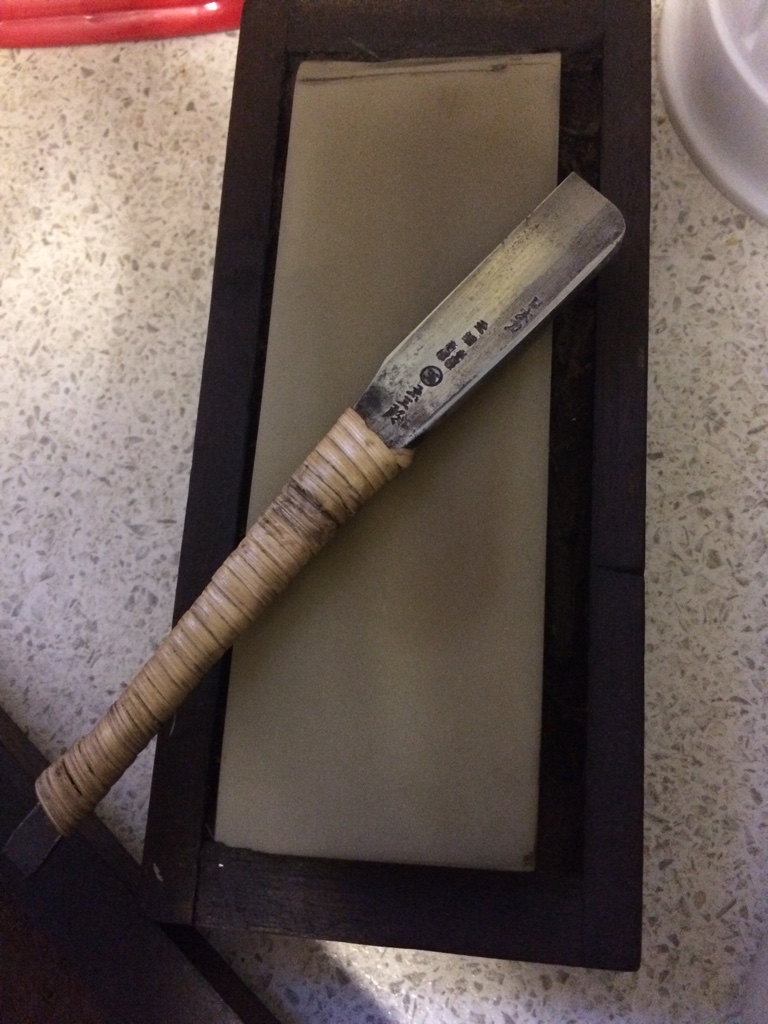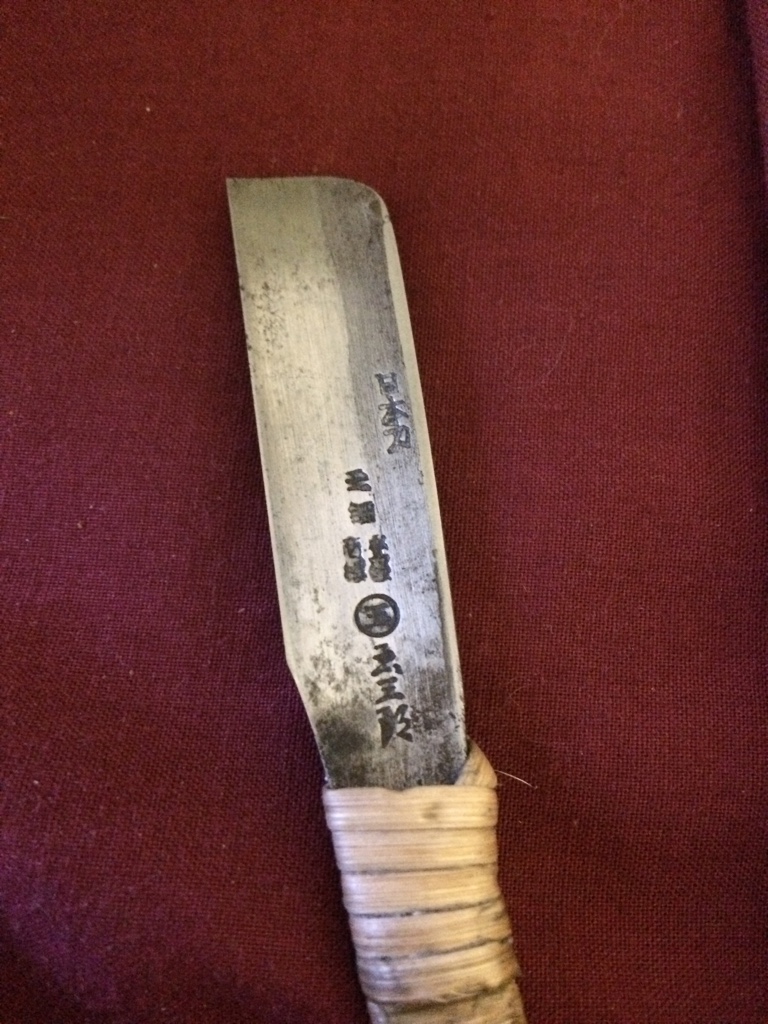Thank you Iyademo Kireru.
Nice! What's the handle wrapped with?
Can´t say it for sure, but for me it looks like the handle consists of two wood pieces, wrapped round with a fine hemp yarn and coated with hard wax.
